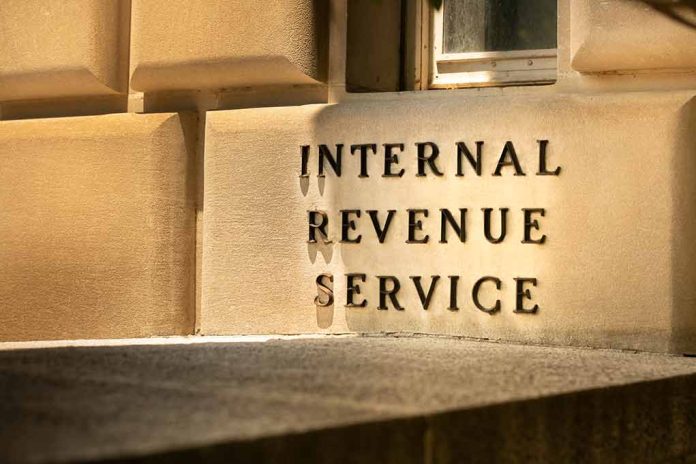
The IRS is set to launch a groundbreaking $1,000 Saver’s Match Program aimed at boosting retirement savings for millions of Americans, but the details are still being ironed out.
At a Glance
- IRS and Treasury seek public input on new $1,000 Saver’s Match Program.
- Program replaces existing Saver’s Credit, offering direct contributions to retirement accounts.
- Eligible individuals can receive up to $1,000 annually starting in 2027.
- Income thresholds and contribution limits apply, with adjustments for inflation.
IRS Seeks Public Input on New Retirement Savings Initiative
The Internal Revenue Service (IRS) and the Department of the Treasury have issued a notice requesting public comments on the implementation of the Saver’s Match contributions, a key provision of the SECURE 2.0 Act of 2022. This new program, set to launch in 2027, aims to encourage retirement savings among low- and moderate-income Americans by offering government matching contributions of up to $1,000 annually.
The Saver’s Match Program will replace the existing nonrefundable Saver’s Credit, providing a more direct incentive for individuals to save for their retirement. Unlike the current credit, which reduces tax liability, the new program will deposit matching funds directly into eligible retirement accounts.
Eligibility and Income Thresholds
Eligibility for the Saver’s Match is income-dependent and applies to individuals aged 18 or older who are not full-time students or dependents. The amount of the match phases out as income increases, with joint filers losing eligibility at $71,000 and single filers at $35,500. These thresholds will be adjusted annually for inflation to ensure the program remains accessible to its target demographic.
To qualify for the full $1,000 match, individuals must contribute up to $2,000 to an eligible retirement account such as a 401(k) or IRA. It’s important to note that while contributions to Roth IRAs are eligible for the match, the government’s matching funds must be deposited into a traditional, pre-tax account.
Key Considerations and Public Input
The IRS and Treasury are seeking input on various aspects of the program’s implementation. This includes the process for claiming the match, ensuring retirement plans can accept these contributions, and addressing potential early withdrawal penalties. The agencies are also exploring ways to increase participation from underserved communities and simplify the overall process.
“Saver’s Match contributions represent a new approach to promoting retirement savings and an important opportunity to improve the long-term financial security for millions of low- to moderate-income Americans,” the IRS and Treasury said.
One crucial aspect of the program is that the Saver’s Match contributions cannot be withdrawn without penalties, which may include repayment to the Treasury in some cases. This restriction is designed to ensure that the funds serve their intended purpose of long-term retirement savings.
Timeline and Next Steps
While the program is set to launch in 2027, the IRS and Treasury are working diligently to finalize the details. They have requested that interested parties submit their comments by November 4, 2024, either through the www.regulations.gov website or by mail to the IRS. This feedback will be crucial in shaping the final implementation of the Saver’s Match Program.
The Treasury Secretary is required to report to Congress on promotion efforts for the program by July 1, 2026. This report will likely include strategies to increase awareness and participation, especially among the target demographic of low- to moderate-income Americans.
As the IRS and Treasury work to finalize the details of this innovative program, it represents a significant step towards improving retirement readiness for millions of Americans. By providing direct financial incentives for retirement savings, the Saver’s Match Program has the potential to make a lasting impact on the financial security of future retirees.
Sources:
- Treasury and IRS request comments on issues related to Saver’s Match contributions
- IRS Seeks Comment on a New Savings Plan for Retirement Funded by the Treasury
- Treasury, IRS Want Your Saver’s Match Suggestions
- IRS Requests Comments on Saver’s Match Contribution Implementation
- IRS Seeks Feedback on Saver’s Match Under Secure 2.0
- IRS Plans Changes to Boost Retirement Savings With $1,000 Saver’s Match Program
- How to Qualify for the Retirement Saver’s Match







